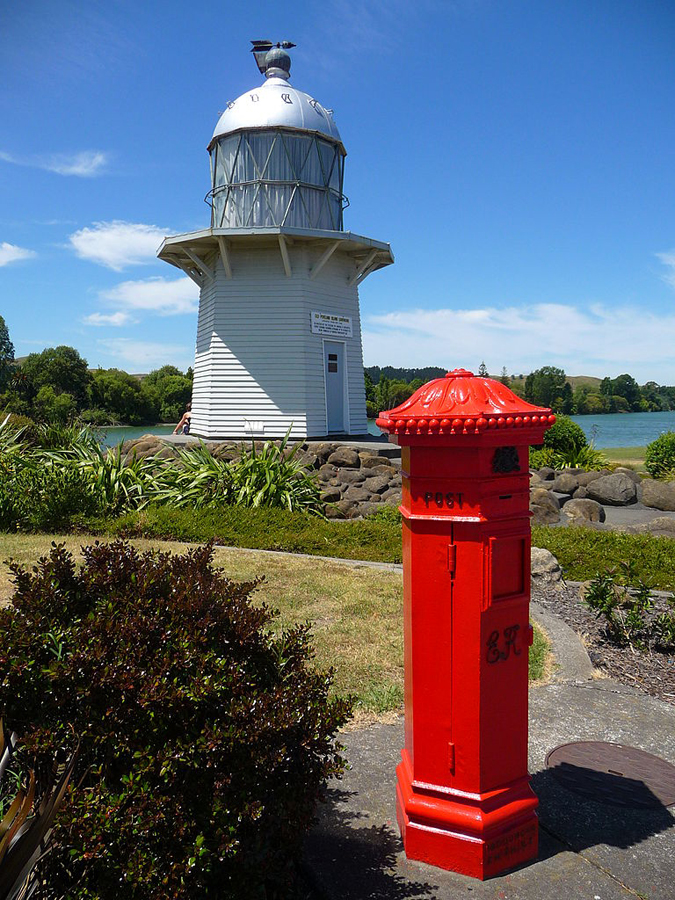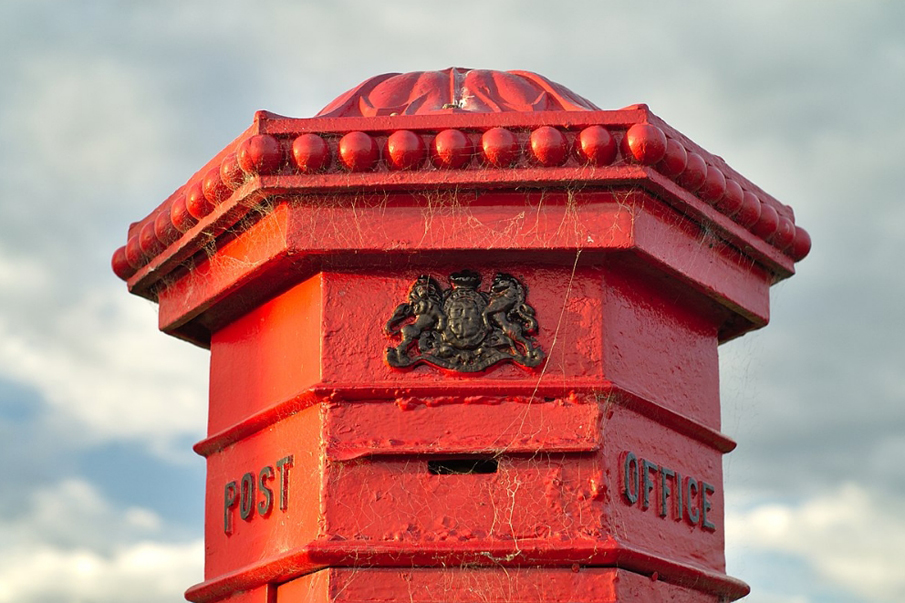Installed in Wairoa in 1902, Post Box (Former) is a rare example of an extant Edwardian-era post box in the popular British ‘Penfold’ design. The post box has historical and social significance for this design, which highlights New Zealand’s close administrative ties with Britain in the early twentieth century. It is representative of a time when the postage system was the main form of distance communication, providing Wairoa with an essential link to the rest of the country. As post boxes were usually built in larger towns and cities, the presence of a box in Wairoa is indicative of the town’s rapid expansion and community demand for the service. Prior to 1862, when the New Zealand Post Office Department made stamps compulsory for national post, all correspondence had to be taken to the post office to be issued with the correct postage cost. The stamp system quickly gained popularity and the Post Office Department began to install ‘receiving boxes’ from 1863 in main urban centres. The new post boxes allowed people to mail letters at their own convenience without having to go into the post office. Around 1878 the New Zealand Post Office Department obtained the plans for the ‘Penfold’ hexagonal design used by the British Post Office. This design was created by British architect and surveyor John Wornham Penfold (1828-1909) and standardised by the British Post Office in 1866. The main New Zealand manufacturer of the cast iron boxes was P. & D. Duncan Ltd. of Christchurch, who began producing them for the Post Office in 1894. Wairoa’s post box was installed in 1902. Painted in the distinctive Post Office red, it is located at the intersection of Paul Street (State Highway 2) and Marine Parade next to the Wairoa Lighthouse (List No.4852). In the 1950s concerns were raised by the Post Office Association about the post boxes, once an essential component of the New Zealand postage system, with over 125 installed around the county at their peak. The association found the boxes to be insanitary, leaky, obstructive and hard to clear in windy conditions. In response, Victorian and Edwardian-era post boxes were systematically removed and replaced by timber hutch boxes, making Wairoa’s Post Box (Former) rare. It is a typical example of an Edwardian hexagonal pillar ‘receiving box’ in the traditional Penfold design and remains in good condition. The front face bears an ‘ER’ insignia, indicating it was manufactured during the reign of King Edward VII. The box stands at approximately 1.5 metres high and has a decorated cap with an acanthus leaf motif encircled with small spherical details. The manufacturers, P. & D. Duncan Ltd., have their name on the base. Relocated to its current position possibly after Cyclone Bola of 1988, and no longer operative, the post box is now an interesting piece of street furniture and part of the historic landscape of Wairoa’s Marine Parade.


Location
List Entry Information
Overview
Detailed List Entry
Status
Listed
List Entry Status
Historic Place Category 2
Access
Able to Visit
List Number
4853
Date Entered
11th November 1986
Date of Effect
11th November 1986
City/District Council
Wairoa District
Region
Hawke's Bay Region
Extent of List Entry
Extent includes part of the land described as Town Sec 851 Clyde (RT HBM3/277), Hawkes Bay Land District, and the structure known as Post Box (Former) thereon. Refer to the extent map tabled at the Rārangi Kōrero Committee meeting on 30 April 2019.
Legal description
Town Sec 851 Clyde (RT HBM3/277), Hawkes Bay Land District
Stay up to date with Heritage this month
